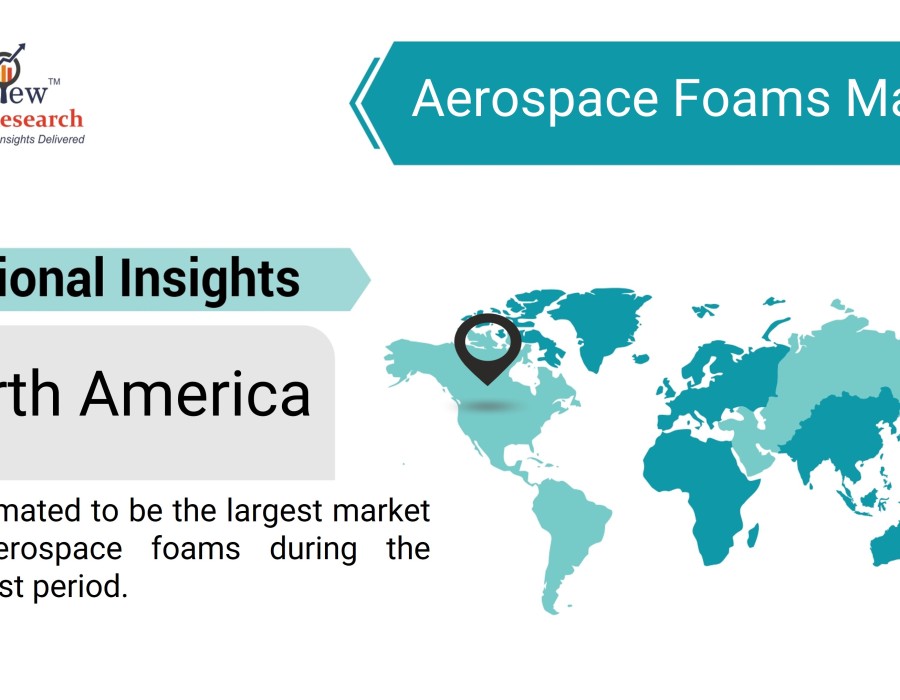Aerospace foams play a crucial role in modern aircraft design, offering lightweight solutions that enhance fuel efficiency, improve passenger comfort, and ensure safety. As the aviation industry continues to evolve, the aerospace foams market is experiencing significant growth, driven by technological advancements, increasing demand for fuel-efficient aircraft, and expanding applications in both commercial and military sectors. This article explores the current landscape of the aerospace foams market, highlighting its growth drivers, emerging trends, and future opportunities.
According to Stratview Research, the aerospace foams market was estimated at USD 5.53 billion in 2022 and is likely to grow at a CAGR of 8.02% during 2023-2028 to reach USD 8.81 billion in 2028.
Growth Drivers
1. Lightweighting Trends
One of the primary growth drivers for aerospace foams is the industry-wide emphasis on lightweighting. Aerospace foams, such as polyurethane foams and syntactic foams, are used extensively to reduce the overall weight of aircraft components without compromising structural integrity. This reduction in weight contributes to fuel savings and lowers operational costs, making aerospace foams indispensable in modern aircraft manufacturing.
2. Increasing Demand for Fuel-Efficient Aircraft
With rising fuel costs and environmental concerns, there is a growing demand for fuel-efficient aircraft. Aerospace foams enable aircraft manufacturers to achieve weight reduction targets, thereby improving fuel efficiency and reducing carbon emissions. As airlines and aircraft operators seek to optimize operational costs and comply with stringent environmental regulations, the demand for aerospace foams is expected to rise.
3. Expansion of Aircraft Interiors Market
Aerospace foams are widely used in aircraft interiors to enhance passenger comfort and safety. From seating cushions and armrests to noise insulation panels and flooring, foams contribute to a pleasant flying experience. The increasing focus on passenger comfort and luxury in commercial aircraft interiors is driving the demand for high-performance aerospace foams.
4. Technological Advancements
Technological advancements in foam manufacturing processes are driving market growth. Advanced materials and manufacturing techniques, such as additive manufacturing (3D printing) and nanotechnology, are being increasingly utilized to develop lightweight and high-strength aerospace foams. These innovations not only improve performance but also expand the range of applications for aerospace foams across different aircraft components.
Trends in the Aerospace Foams Market
1. Sustainable Materials
There is a growing trend towards the use of sustainable and environmentally friendly materials in aerospace foams. Manufacturers are focusing on developing bio-based foams and recycling technologies to reduce the environmental impact of foam production and disposal. Sustainable practices are becoming increasingly important in the aerospace industry, influencing the adoption of eco-friendly foams.
2. Growth in Military Applications
Aerospace foams are extensively used in military aircraft for ballistic protection, vibration damping, and thermal insulation. The increasing defense budgets and modernization programs worldwide are driving the demand for specialized aerospace foams that meet stringent military specifications. As governments invest in next-generation fighter jets and unmanned aerial vehicles (UAVs), the military aerospace foams market is expanding.
3. Regional Market Dynamics
The aerospace foams market exhibits varying dynamics across different regions. North America, with its strong aerospace industry and presence of major aircraft manufacturers, dominates the market. Europe follows closely, driven by the presence of leading aerospace companies and a robust defense sector. Asia-Pacific is witnessing rapid growth, fueled by increasing air travel demand and investments in aerospace infrastructure.
Opportunities for Growth
1. Emerging Markets
Emerging markets in Asia-Pacific, Latin America, and the Middle East are expected to offer lucrative growth opportunities for aerospace foams. The rapid expansion of commercial aviation fleets, coupled with government initiatives to boost aerospace manufacturing capabilities, is driving market growth in these regions.
2. Advancements in Space Exploration
The growing interest in space exploration and satellite manufacturing is creating new opportunities for aerospace foams. Foams are essential for thermal insulation and structural support in spacecraft and satellites. As private companies and space agencies embark on ambitious space missions, the demand for advanced aerospace foams is expected to increase.
Conclusion
The aerospace foams market is poised for significant growth, driven by lightweighting trends, increasing demand for fuel-efficient aircraft, advancements in technology, and expanding applications in aircraft interiors and military sectors. Manufacturers and suppliers in the aerospace foams industry must continue to innovate, develop sustainable solutions, and capitalize on emerging opportunities in both established and emerging markets. By leveraging technological advancements and addressing environmental concerns, the aerospace foams market can sustain its growth trajectory and contribute to the future of aviation.






Comments